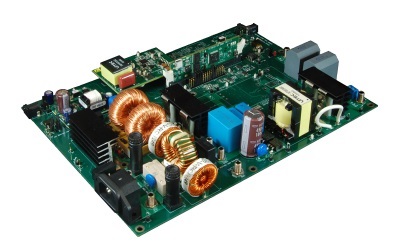 The goal of the smart grid is to improve the efficiency, reliability and sustainability of the production and distribution of electricity. It’s therefore no surprise that smart grid efforts have extended to renewable energy in recent years to further enhance sustainability, encompassing such technology as energy harvesting and solar power.
The goal of the smart grid is to improve the efficiency, reliability and sustainability of the production and distribution of electricity. It’s therefore no surprise that smart grid efforts have extended to renewable energy in recent years to further enhance sustainability, encompassing such technology as energy harvesting and solar power.
In solar power systems, a solar inverter is a critical component. It performs the conversion of the variable DC output of the Photovoltaic (PV) module(s) into a clean sinusoidal 50- or 60 Hz AC current that is then applied directly to the commercial electrical grid or to a local, off-grid electrical network. There are several different kinds of inverters, including central, string, and micro inverters. Solar micro inverters are a fast-growing application in this industry. Rather than linking all of the solar panels in an installation to a central inverter, solar micro inverter systems place smaller, or “micro,” inverters at the output of each individual solar panel. There are many benefits of this kind of configuration.
The first benefit is that it reduces the losses that can occur due to partial shading, which increases system efficiency. The microcontroller (MCU) in the system can implement maximum power point tracking (MPPT). The controller executes the very precise algorithms required to keep the panel at the maximum power extraction point while adjusting the DC/DC and DC/AC conversion to produce the output AC voltage for the grid. This makes solar micro inverters more efficient than the other options and can increase power output over the long term.
Solar micro inverters are also more reliable because they produce grid-matching power directly at the back of the panel. Panels are connected in parallel to each other, and then they connect to the grid. This means that a single failing panel or inverter won’t take the entire string of panels offline; power will continue to be sent to the grid.
Another benefit of solar micro inverters is that they offer a modular design. This makes it easier to scale your solar system compared to if you were adding a central inverter or restringing string inverters. It also makes it easier to customize your design, if you so choose.
If you want to find out if a solar micro inverter is the right solution for your smart grid system, try our C2000™ Solar Micro Inverter Development Kit, based on our C2000 Piccolo™ TMS320F28035 MCU. This controller offers the performance and flexibility needed to implement MPPT and other complex functions, and the kit offers a simple graphical interface that helps users easily evaluate the design. For designers who want to dive into code development, detailed theory-based documentation guides users through software and hardware implementation, building incrementally from open loop to closed loop operation of the solar micro inverter.
Leave us a note a let us know what you think about solar micro inverters and whether they are a good fit for improving your next solar power system.
